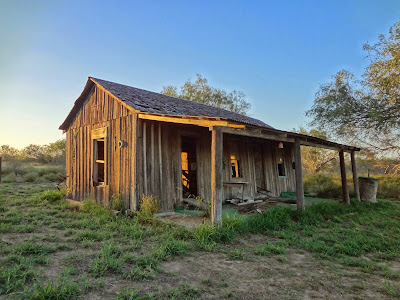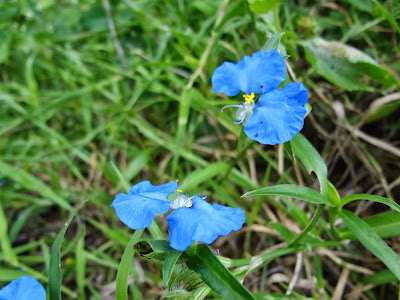It’s nice to get into the woods with someone who’s an expert
tracker. Never talks loudly, keeps their
nose to the wind and their eyes along the skyline and then takes note of not
only the tracks but the plants, birds and insects as well. By the way, the really great trackers can
identify every plant and bird because tracking is just a part of their overall
woods knowledge. Years ago I knew a
fellow who was a great tracker. He was
about 50 years older than I was and I’d drop by his place in the woods and he’d
make me a cup of coffee. We’d talk about
the Brushlands and about hunting and sometimes he’d ask me if I wanted to walk
with him because he was looking for one thing or another. It was an education just watching that man
move through the woods. We never said a
word while woods roaming or tracking; and we would just keep going sometimes
zigzagging left or right but always on the trail. He’s been gone awhile but I think of him
often.
Trackers come in two varieties: Those who read sign and those
who feel sign. The first type traces the
route an animal took by dutifully taking note of every nuance like the tracks themselves
or bent twigs, droppings, bits of fur and residual odors. People who “feel” sign are something quite
different. They experience the animal as
it wandered through the woods or fled the scene. In a sense they become the animal, or so it
seems, as they move into the forests and hills oftentimes going directly to
where the beast is lying or hiding. Both
types are successful but the first is more mechanical while the second often
appears clairvoyant. Of course, those
who track by feel will also check for physical sign just to make sure their
senses aren’t fooling them.
So what is it that allows some people to track by feel? Simply put, they have a vast body of
experience in the woods. Like that old
man I used to know. It’s not necessarily
that they are born with the gift although they tend to be infatuated with the
outdoors from childhood. But a life in
the woods taking note of all things turns them into what can only be described
as part deer or coyote or bear or cougar.
In other words, it becomes part of who they are.
When I was a kid a buddy of mine and I made a great effort to
learn how to track. It was, however,
something that for us was as much a part of our survival as it would be for a
city dweller to learn to negotiate neighborhoods or alleyways. We spent most of our time in the woods and as
such we were forced to understand our surroundings or suffer the consequences. We were in grade school and were often left
alone in very remote places. The itinerary
was broad and somewhat vague but essentially one learned to observe every sound
and memorize any new scent and study each and every track be it from a mammal
or reptile or even an insect. We learned
to never speak loudly; in fact, we often went for days without ever talking
above a whisper. It helped that we were
both enamored with nature and couldn’t think of ever living anywhere else. Perhaps you’ve heard the saying that
commonalities foster friendship or at least encourage assembly. People who don’t drink or smoke won’t be
found in a bar, for example. And people
who are committed woods types don’t fare well in cities.
But tracking in its simplest forms is not an art but instead
a technical achievement. There are
scores of books on tracking and most people, if they spend enough time in
nature, can become rudimentary trackers.
I see this every hunting season when somebody shoots a deer and it runs
off and then someone follows the blood trail and finds the downed animal. But that is not tracking nor is tracking necessarily
following a line of footprints. No,
tracking in its finest manner is the art of learning to interpret sign and to
see ahead—not so much into the future but into the past. A great tracker can see the animal or person
as they walked through the area an hour before or a day before. Superior trackers can “cut sign” that’s a
week old.
There aren’t many good trackers anymore. And why should there be? It’s a skill that’s really not needed. Even the US Border Patrol that once upon a time
was known for having some fairly good trackers is no longer focused on
producing great sign cutters. After all,
we live in a technological world with electronic sensors and helicopters and
drones and even satellite imagery. The
USBP drives around or sits in their vehicles waiting for sensors to go
off. Or if at night they depend on
night-vision equipment and radio communications. There’s absolutely nothing wrong with that
other than the knowledge of tracking has essentially vanished from that
organization. There are a few holdouts
but they’re rare. Several months ago a
fellow from the Hebbronville, Texas BP station called me to talk about some
tracking he’d accomplished. I was
pleased to hear he took tracking seriously.
But I recall not too long ago arriving at a brushy tract and a BP fellow
approached my truck and said, “We’ve got a helicopter coming because there are
about fifteen illegals hiding over there in that brush.” I nodded and said okay since I was the owner
of that land. Within a few minutes a
helicopter arrived and started making all sorts of noise. Six or seven BP also showed up along with
several US Army types replete with M16s, camouflage and fancy sunglasses. I was collecting some pieces of wood to make
knife handles so I kept to myself and let the fellows and chopper do their
thing. But after about twenty minutes of
noise and guys walking back and forth behind me everything grew quiet. I looked around but everyone had left. After another few minutes I decided to walk
into the brush where the BP said the illegals were hiding. In all there had been about 10-12 pairs of
boots on the ground but no one had come by to tell me whether or not they’d
found anyone. So anyway I started
walking quietly (what a relief to have that noisy chopper gone) and entered a
narrow trail leading into thicker brush.
I’d gone about 100 yards when I turned to my left and saw eight fellows
sound asleep in a shallow gully. Folks,
I was dumbfounded. I could see where the
BP and the Army people had walked that very trail only minutes before. All they had to do was look to their left and
they would have seen those guys fast asleep—even as the chopper burned fuel
overhead! “Hey, wake up,” I said. But those boys were off in dreamland. So I fired three 20 gauge rounds into the air
and that woke them up. “What are you
guys doing here?” I said. But they
didn’t say anything and just got up and we all walked to this little road
another hundred yards away. Just then
several BP fellows approached from a grassy field along with a couple of US
Army guys. One of the BP fellows asked,
“Who found them?” I was not thinking
kind thoughts towards the BP at that moment but nonetheless I said, “I did.” I could see the look on that BP guy’s face as
he realized the old woods rat he’d seen earlier knew a few things about the thorn
country.
I once helped find a man who’d been lost for about a
week in some thick woods. Scores of law
enforcement people and others on horseback had obliterated all the sign and so
it became a matter of sensing the man as he walked perhaps lost and scared. I entered the thickets just after daybreak
and about forty minutes later I felt something nearby. All around me were horse tracks and horse
dung and dozens of tread-soled boot prints.
Sadly, the man had faded away probably that night after having had a
stroke or heart attack. Not more than
100 feet from where he lay were horse tracks.
When his wife showed up to identify the body she looked at me and I
remembered seeing her as I had walked into a ranger station at daybreak. I didn’t think she’d noticed me. But she said, “When I saw you earlier I got
this feeling you would find…” She said
his name and then looked down at him and knelt and placed her hand on his
forehead. Those are hard moments, my
friends.
Track a lizard through the woods and find where it ate a
beetle. Take note of the snake track in
front of you and decide whether it was a rattler, an Indigo or a whip snake. See where the hogs crossed and then watch them
as they traversed a meadow ten hours before.
See the bobcat that came through yesterday. Visit the coyote’s sign post and find out who
has come to visit. By the way, that old
man I spoke about at the top of this piece was married about fourteen miles
east of here back in 1920. He wedded a
beautiful girl who lived on the ranch where they became man and wife. I miss them both. He passed on in 1973 and she left in 1987. And for those who might be wondering…his name
was Trinidad M. Valverde and she was Rafaela Guerra. They were my grandparents.

























































